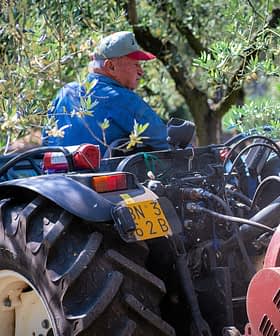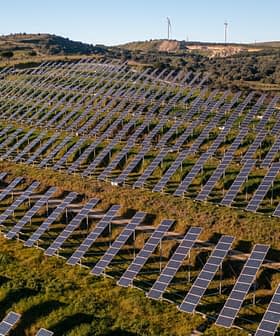The human population’s impact on land and natural resources is so relevant that food systems are responsible for 70 percent of global freshwater use and 80 percent of deforestation.
They also account for a significant quota of greenhouse gas emissions which are actively altering the world’s climate.
It is no longer enough to prevent further damage to the land; it is necessary to act decisively to reverse and recover what we have lost.
Food systems are considered the main source of biodiversity loss on all continents.
These are just some of the findings from the latest major report published by the United Nations Convention to Combat Desertification (UNCCD).
See Also:Record Heatwave and Drought in Pakistan Threaten Crops and Olive FarmingIn the Global Land Outlook — Second Edition, Land Restoration for Recovery and Resilience (GLO2), which took five years to write, the UNCCD investigated the consequences of neglecting soil and biodiversity. It also recommended actions to reform food systems, restore land and further sustainable development.
The report noted how current land management threatens the health and the continued survival of many species on Earth, including humans.
More than half of the global annual GDP, or approximately $44 trillion (€42 trillion), wrote the UNCCD scientists, depends greatly or moderately on “nature capital.”
According to the report’s authors, the economic returns of restoring land and reducing degradation, greenhouse gas emissions and biodiversity loss could be as high as $125 to $140 trillion (€119 to €133 trillion) every year.
To better grasp the magnitude of those numbers, the researchers identified three different “year 2050 scenarios,” whose outcome will depend on the ability to reform the global approach to land restoration and land management.
In a baseline scenario, with no relevant reform, 16 million square kilometers, almost as large as Latin America, will suffer from continued land degradation with no improvements in greenhouse gas emissions.
In the restoration scenario, with 50 million square kilometers restored against the 10 million pledged, most developing countries would see their crop yields increase between 5 and 10 percent. Soil water holding capacity also would increase by 4 percent in rainfed croplands, and 11 percent of biodiversity loss would be averted.
The most optimistic scenario, dubbed restoration and protection, includes active strategies involving land restoration and soil conservation, biodiversity protection, water regulation and carbon stocks.
In such a scenario, 4 million square kilometers of land would be regained, a third of the projected biodiversity loss in the baseline scenario would be avoided and seven years’ worth of greenhouse gas emissions would be averted.
The report highlighted how agriculture, which accounts for roughly 37 percent of total global land use, can play a decisive role. Human activities have significantly altered natural processes occurring on 75 percent of all land.
Due to many different causes, such as current food production practices, 25 percent of the land is considered substantially degraded and has lost at least some of its productivity. This already impacts the well-being of at least 3.2 billion people.
“It is no longer enough to prevent further damage to the land; it is necessary to act decisively to reverse and recover what we have lost,” wrote UNCCD Executive Secretary Ibrahim Thiaw in the report’s introduction.
The authors noted how a series of widely-deployed unsustainable practices in agriculture have proven to contribute to land degradation.
Among them are the use of pesticides and fertilizers, large-scale monocropping, overgrazing by livestock, deforestation, draining of wetlands, irrigation and excessive groundwater extraction, lack of ground cover for extended periods, compaction from heavy machinery and inversion of soils through tilling.
“These practices often bring increased yields in the short-term, but have significant and often irreversible long-term ecological costs,” the authors wrote.
“For food systems to become sustainable, a radical shift in policy and practice is needed,” said Heather Elaydi, a food, land, and water researcher and author of the GLO2 working paper Food System Resilience and Land Restoration.
“Current food production practices are centered around a largely intensive, industrial model that has led to adverse impacts on the environment,” she told Olive Oil Times. “A move toward more sustainable practices, such as regenerative agriculture, which promotes healthy soil, is needed on the production end.”
“Shorter food distribution chains and stronger local and regional markets are also a big part of sustainability,” Elaydi added. “In terms of consumption, sustainability requires a move away from highly-processed foods and a reduction in consumption of meat.”
Regenerative agriculture focuses on cultivation and grazing practices that improve soil health by restoring biodiversity, rebuilding organic matter, increasing soil fertility, promoting nutrient cycling, increasing water infiltration and retention, reducing erosion and storing carbon.
Methods that can be considered part of regenerative agriculture include chemical-free or low-chemical agricultural production, cultivation of indigenous varieties, minimal soil tillage, agroforestry, agrobiodiversity and crop-livestock integration.
See Also:Climate Change Threatens Steep-Slope AgricultureRegenerative agriculture represents an innovative approach that is slowly gaining traction among small and medium food producers in many countries.
It aims to preserve soil health and properties, thus protecting farmland fertility. Still, it also aims to take care of former and abandoned farmlands in terms of reforestation and restoration of wetland ecosystems.
Some examples of regenerative agriculture are permanent cover crops to protect the soil, actions to enhance biodiversity, and preservation of perennial crops.
“Essentially, [regenerative agriculture are] forms of agricultural production that work hand in hand with nature,” Elaydi said. “If we are talking about making food systems more resilient, this requires sustainable methods.”
“Continuing on the path we are on now will lead to further soil degradation and other resource depletion or pollution,” she added. “Regenerative agriculture can help ensure that nature is able to support food systems for future generations.”
This approach is still somewhat alien to most industrial production, as “some of the bigger players in the food system… regularly use environmentally harmful practices,” Elaydi noted.
For olive growing, regenerative agriculture is not a novelty. This approach is used in some California olive groves and is also applied in some groves in Andalusia, the largest olive oil-producing region in the world.
According to the 2020 Whole Foods Market report, in Andalusia, this approach reduced soil erosion by 95 percent in some olive groves.
The GLO2 lists many other relevant examples, such as what is happening in the semi-arid steppe environment of the Altiplano Estepario in southern Spain, where water is scarce, and climate conditions are extreme.
On the altiplano, an ambitious dry-land restoration effort to halt desertification and soil erosion, and revert such effects, started in 2014.
“The producer association (AlVelAl) supports farmers to transition to regenerative farming practices across the Altiplano,” the report authors wrote. “Techniques employed include constructing swales, restoring terraces, planting green cover crops and creating windbreaks to conserve soil and water and enhance biodiversity.”
“By 2020, 140,000 trees had been planted, 200,000 seeds sown by drone and two thriving cooperatives established that process produce from AlVelAl farmers,” they added. “The aim is to strengthen supply chain links to AlVelAl foods, which sells regeneratively grown products directly to consumers, including almonds, pistachios, walnuts, wine, honey, aromatic herbs and olive oil.”
While no action against climate change and global warming is likely to succeed if agriculture is not reformed, many practices of sustainable farming are at hand and in many cases, they can even reverse current declines.
Elaydi agreed, further suggesting that necessary reform to industrial-scale monocropping and over-tilling is essential in the face of rising temperatures.
“These large, exposed areas with little protection from the elements or sufficient nutrients from multiple crop rotations, trees, or cover crops, will be vulnerable to land degradation,” Elaydi said.
“However, sustainable methods, such as agroforestry, cover crops, or crop-livestock integration, can not only protect soil from the impacts of climate change but can help restore some of the damage that has already been done,” she added.
Given the severe impact of industrial-level livestock and the growing meat consumption rates on the planet, researchers noted how plant-based diets should be promoted at all levels. In addition, protein-rich food alternatives, such as legumes, should be considered.
“Legume crops can also serve as alternative ways to preserve nitrogen without synthetic fertilizers,” Elaydi said.
Governments should act, said the Palestinian-Canadian researcher.
“More sustainable diets through education, subsidies, and better wages should be provided to discourage consumption of highly processed and resource-intensive foods and encourage diets rich in chemical-free, locally-grown plants where possible,” she concluded.








